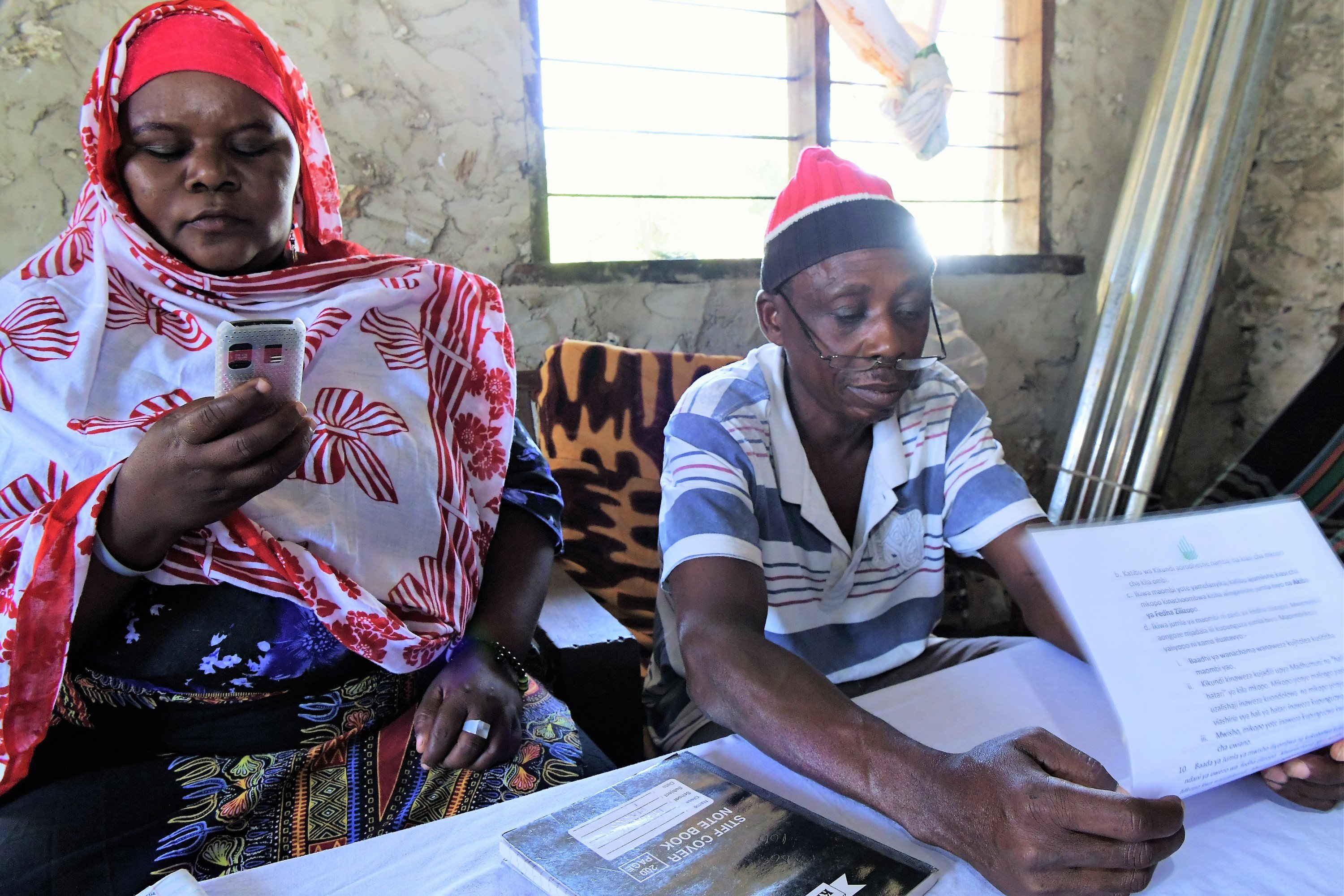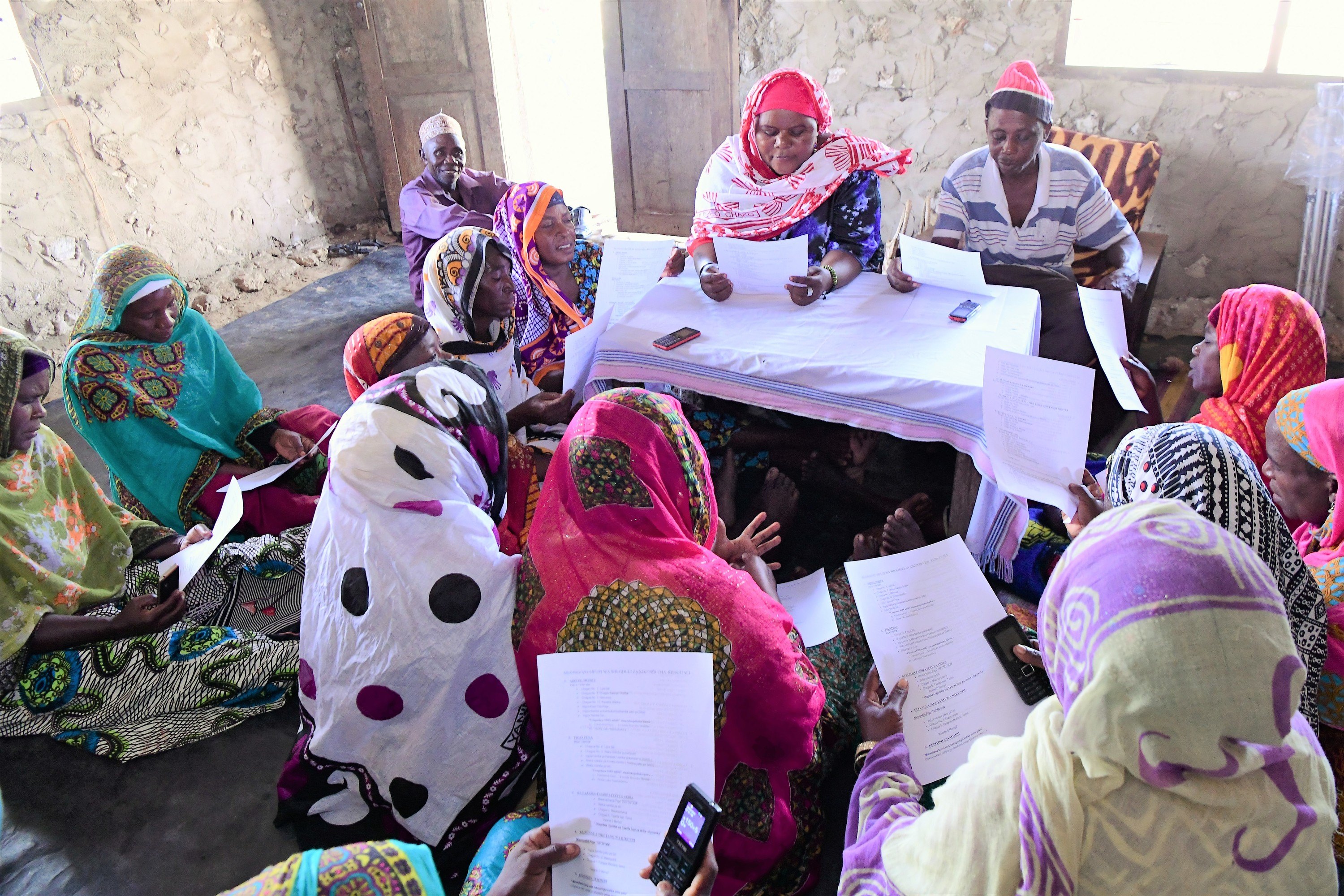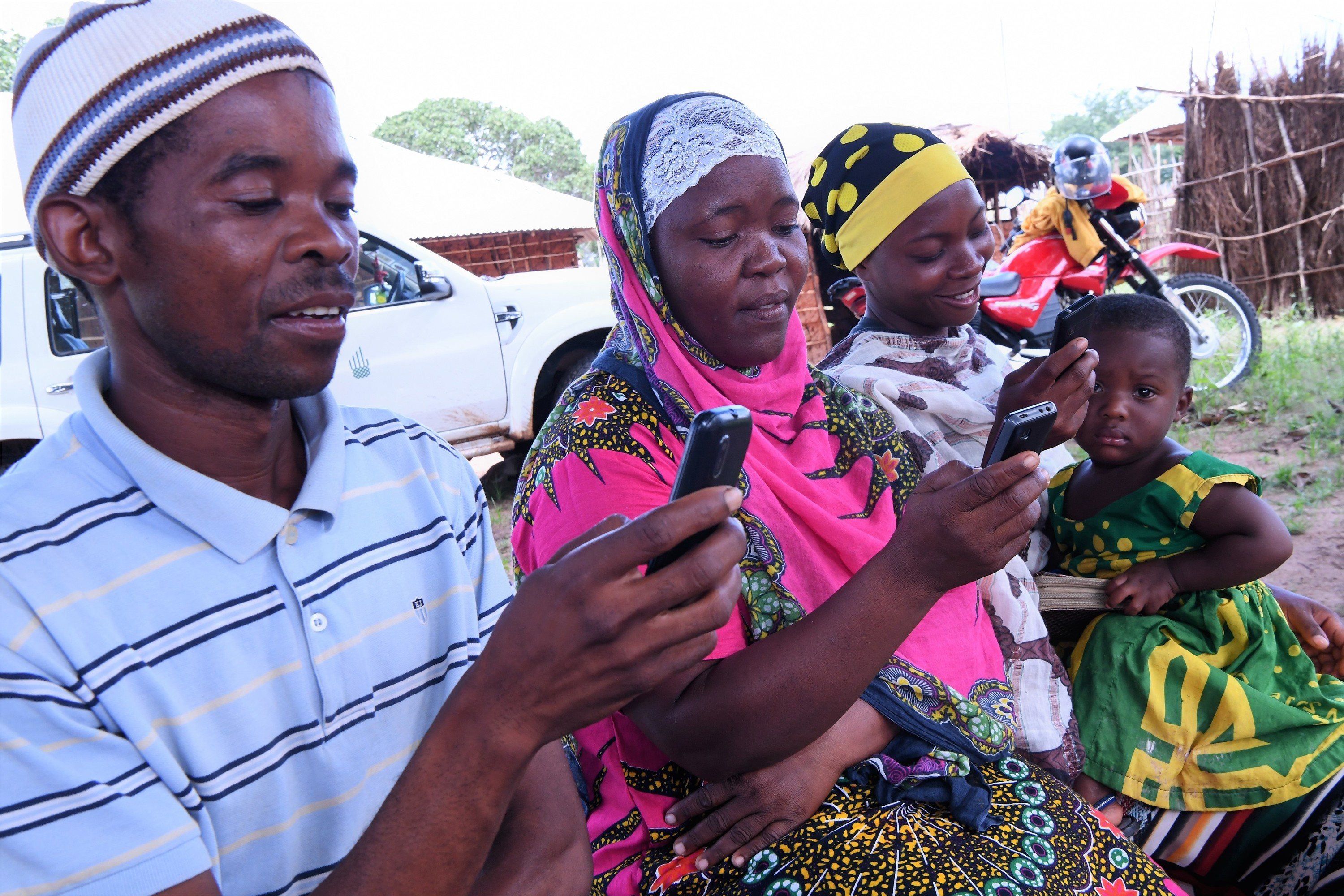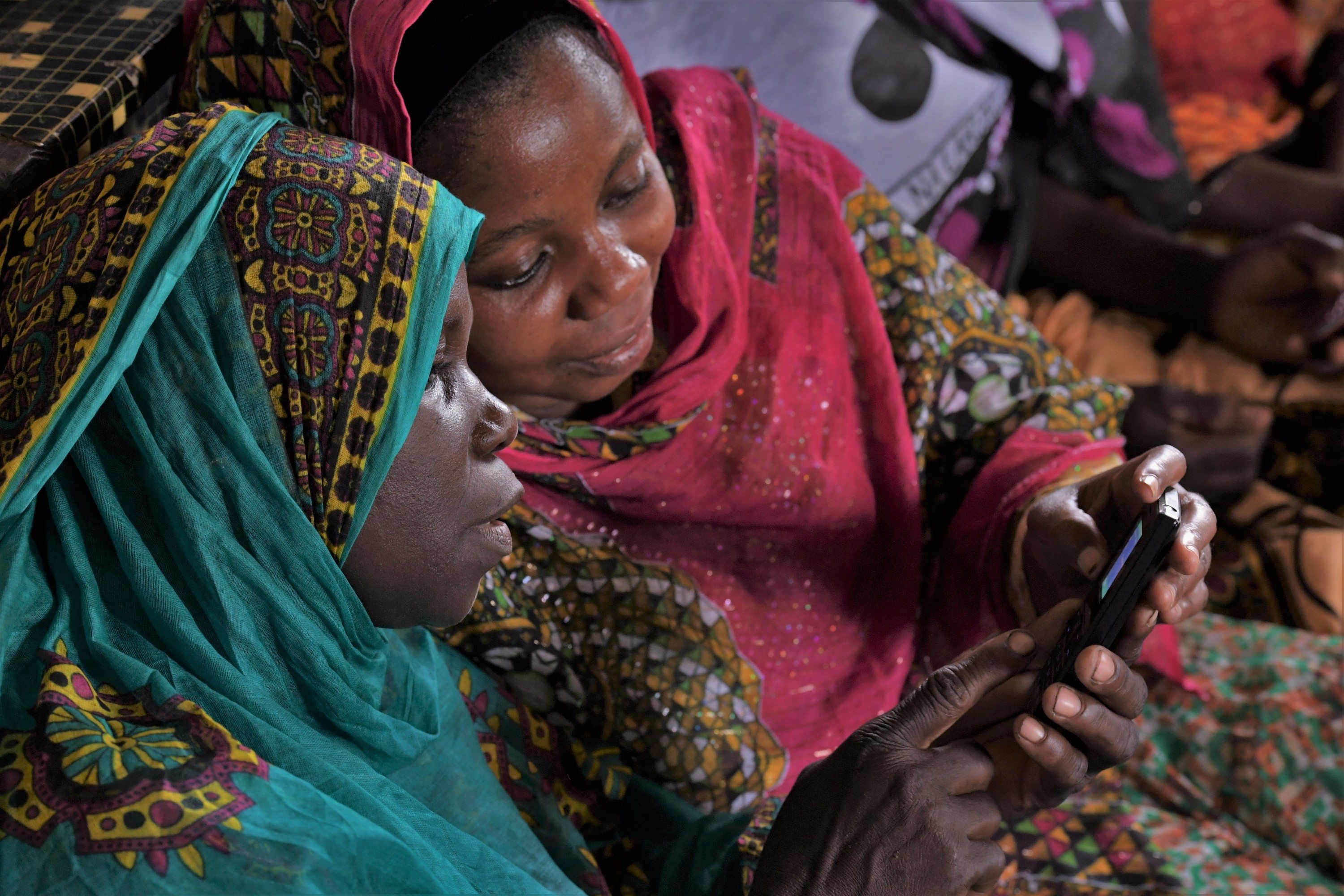It is a cloudy day in southern Tanzania as we head to a meeting with the Nema Digital Savings Group. The sky is grey, and towering columns threaten to crash upon the fields at any minute. As we drive along the solitary road that cuts its way through fields, swirling past small farming plots, it begins to drizzle. When we arrive at the village where the group is based, traditional greetings are exchanged; and AKF staff begin a back-and-forth chant of “Weka Akiba”, “Boresha Maisha!” “Boresha Maisha” “Weka Akiba!” (meaning, “Save!” and “Invest in Life!”). The pleasantries are interrupted as the rain becomes more intense, forcing a quick scramble of feet and accompanying carpets into a nearby building.
The Nema Group started as a cash-based savings group in 2012. At that time, it consisted of 25 members (15 women and 10 men), gathered together after a mobilization meeting organized by the Aga Khan Foundation and the village’s executive members. Before, community members simply stored their cash in their homes. However, many saw the value of a cash-based savings group because they believed it ensured greater safety of one’s money, and because it enabled access to loans that many hoped to use for school fees and their small businesses selling vegetables.
Rashidi Omari, age 42, benefitted from the cash-based savings group because it allowed him to purchase and rear goats. Today, he owns a farm on which the many goats he owns graze before they are later sold for meat.
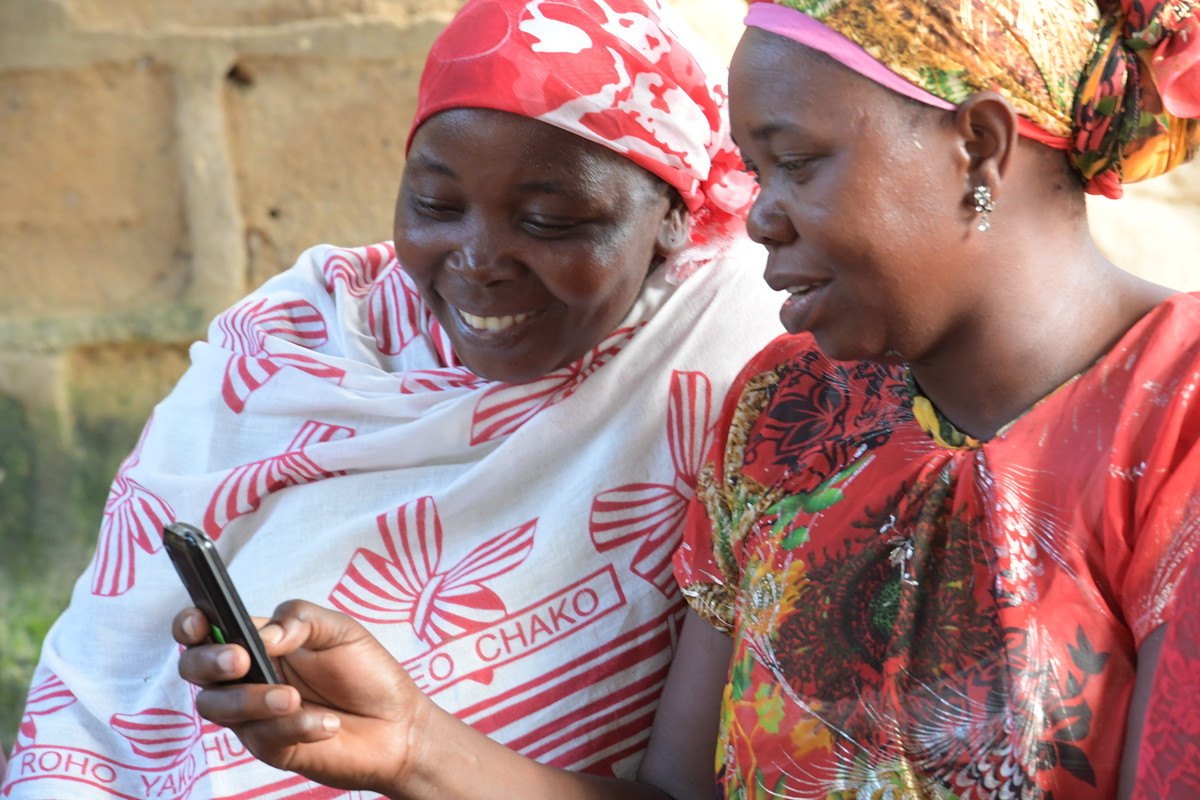
Road Bumps with Cash-Based Savings Groups
Despite the many benefits of cash-based savings groups, the Nema group’s members came to see several flaws with the group’s operations. First, the weekly meetings often ran for longer than hour as the group’s treasurer had to perform cumbersome tasks: checking the float, reviewing and confirming previous contributions, collecting and confirming new contributions, and considering loan applications. Second, a lack of accountability and poor book keeping meant that the group often found their cash box to be lighter than expected. One day, the group was dismayed to find that TSH 2,000,000 ($900) were missing. They attributed the theft to bad record keeping, where members could not reconcile what they had put in the box with what remained. This in turn allowed someone to take advantage of the flaw. The theft sowed discord amongst group members, and group morale suffered. Many began to suspect that the group’s leaders were siphoning cash. Members left the group while others pondered the value of remaining.
In response to the growing mistrust, the Nema Group’s leaders called a meeting. As they reflected on what needed to be improved, the group saw a need for greater transparency. For many members, it was the transparency and security offered by a digital platform that encouraged them to stay with the group and motivated some who had left to re-join.
Going Digital
Nema Group members were familiar with mobile money but still had many questions about how this new approach to collective saving would work. How do we know a group member is contributing? How can I determine my share when I want to withdraw cash? Where is the money being kept?
When the transition to a digital platform began, many group members found it hard to follow along. Uncertainty around decision making and using the platform often resulted in frustration, as the USSD (a mobile system that uses text messages to move money) refreshed and returned to its home screen whenever there was a delay or lack of action. This design flaw also made each meeting longer. Despite the challenges, Rashidi Omari says that everyone was eager to learn and was patient with the education process.
Aga Khan Foundation staff visited and coached group members about the platform and helped to boost trust and knowledge about the system. The group reports that 60% of its members were able to adopt the digital platform easily. The remaining members sought extra support from the early adopters for help as the group made the shift.
Growing pains included an aversion to risking too much by immediately giving up cash-based savings completely. Members started by saving just a little via the digital platform – approximately TSH 3,000 per month, as opposed to an average of TSH 32,000 per month when the group was using a cash box. After the first nine month cycle finished, the digital share-out went as expected, and this bolstered the group’s confidence.
Growing Confidence and Savings
As trust and confidence grew, so did the average amount saved via the platform. Today, mobile savings range from TSH 20,000 to TSH 200,000 per month. The system’s security, user-friendly experience and time savings grew the trust and interest in digital finance and the platform. Success in securing loans via the platform helped to increase interest, and so did the simple mini-statements, which allowed group members to confirm that the money they contributed was still in the collective pot.
The group continued to keep written records for a while so that they could compare the written records with the digital values. Finally, the digital platform allowed them to reduce the frequency of meetings from weekly to every two weeks. Today, with a strong network connection, digital savings group meetings never run longer than half an hour.
The Larger Promise for Inclusion
Technology has often been a leveler and an enabler for opportunity. At the heart of the digital savings group is a commitment to democratic decision making and knowledge transfer. At the beginning of each cycle, the group makes decisions collectively to set the group constitution, including minimum payment at each meeting, the loan service charge, the maximum duration of a loan, and the election of a chair person. This group decision making ensures shared alignment and ownership in the process, reducing complaints. Nema Group members chose to establish a system under which the interest rate increases as the size of the loan increases, a significant change from the cash-based savings group approach, where groups typically set an interest rate of 3% on each loan.
Now more than ever, we have tools and services to ensure that inclusive growth is the cornerstone of the global development agenda. A commitment to financial inclusion and digital platforms could ensure that approximately 1.6 billion unbanked people could gain access to formal financial services (such as formal loans, sending and borrowing money), approximately half of them women, according to the McKinsey Global Institute. As Africa’s mobile revolution continues, it is critical that development initiatives influence change. Nine out of ten of the Nema Group members indicated that they were willing and ready to learn more about other digital financial products. Many of the 10 percent who did not show a commitment to further learning cited eyesight problems, which make it difficult to interact with a digital interface, a reminder that we need solutions that fit people’s varying needs.
Financial inclusion is high in countries where more than 70% of the people can pay digitally. Dedicated, digital savings groups are vital to achieving this goal.
Aditya Rau is a Strategy and Communications Fellow for the Aga Khan Foundation Canada. He currently works in Zanzibar, Tanzania.
